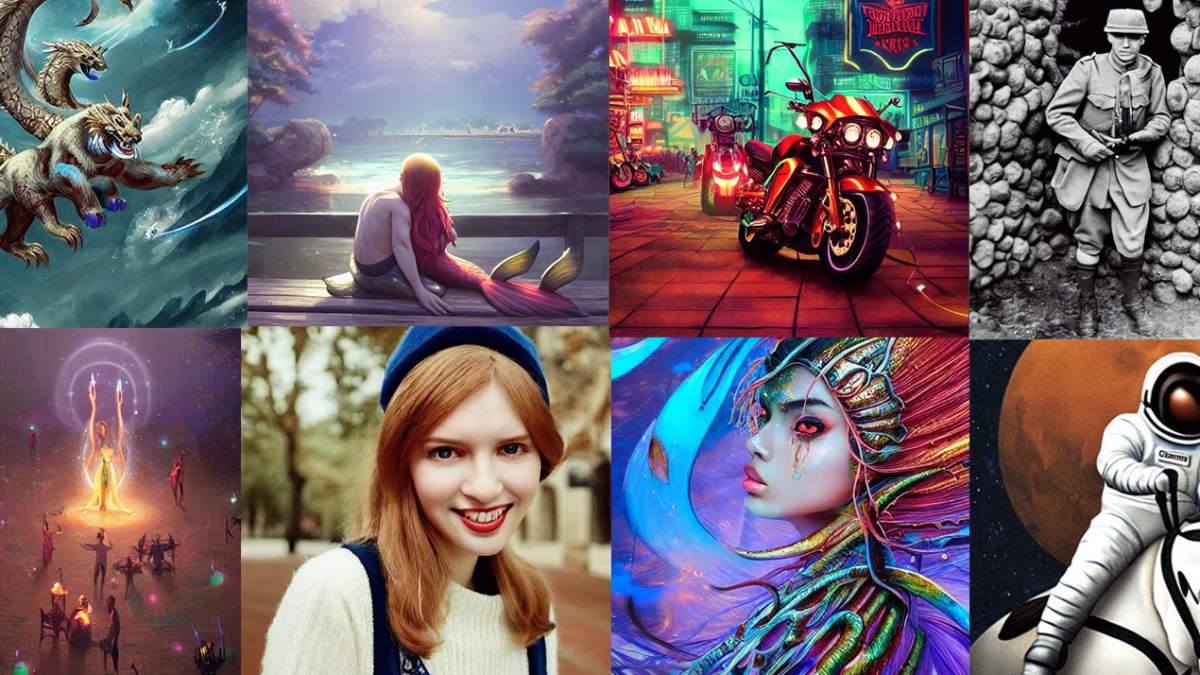
Artificial intelligence (AI) has managed to prove all its critics wrong, who previously claimed that it is impossible for robots to be creative! AI has managed to disrupt just about every industry, but its recent advancements in digital art seem to have hit quite differently.
AI picture generators are a new technology that makes it possible to generate pictures by simply typing instructions into a computer program. In this article, we will tell you all about them, how they work, what they hold for the future of digital art, and our final verdict! Do you want to learn about technology that makes it possible for you to create art just by ‘speaking it’ into existence? Then be sure to read this article to the tail end!
What is an AI Picture Generator?
AI image generators are gaining hype because of their ability to convert ideas and concepts into visual representations. They are stepping up the perception of art in the digital space and the world at large, perhaps because of their availability to the average person.
But what is an AI picture generator, you ask? AI picture generators are simply tools that use machine learning to create pictures. These are programs that take instructions, usually known as ‘prompts’ and do their best to create the picture you describe as accurately as possible. We are used to pictures and art being drawn by artists and captured by cameras, but AI picture generators are opening a window of opportunity where anyone can create a piece of art provided they have a very rich imagination.
Although these tools have raised a fair bit of controversy, they are not new by any stretch of the imagination. Curtain raisers such as Dall-E 2 and Stable Diffusion paved the way for people to experiment with the power of AI, but more innovative and versatile AI picture generators such as Image Upscaler are providing users with more options, including additional styles and parameters which make the results more unique!
How It Works
On the face of it, the working of AI picture generators is very simple. Think of an item you want to draw and describe it as accurately as you can and voila! In fact, many artists are now leveraging this newfound super power to come up with more unique pieces, explore different concepts and try out new ideas.
On the backend of the process, however, is a process that will simply blow your mind away! These tools use Diffusion Models (DMs), which is a likelihood-based technology that creates new pictures based on probabilities.
DMs are an alternative to Generative-adversarial Neural Network (GAN), and they use latent diffusion models (LDMs) to create pictures with optimal resolution.
AI picture generators are usually trained on millions of pictures, and are able to identify objects by ‘observing’ existing pictures created by real people. This technology is so reliable that various creators have used pictures derived from AI picture generators to compete in art competitions and ended up scooping different awards!
Older models of AI picture generators are ‘open source’ which simply means that developers can use their codes to implement their own applications, but more recent ones are taking a different approach!
Innovation at Its Best
With that being said, there is no denying that AI picture generators have opened up the digital space for innovation. They have made it possible for picture lovers to create their own art, instead of merely marveling at the creations of others.
Professional artists are also now more ‘equipped’ since they have the option of beginning their work on a ‘work-in-progress’ basis, although this can also be looked at as a limitation to creativity.
Thanks to advancements in algorithms used by AI, these tools make it possible for users to sample some of the best pictures stored in the internet archives and relay results that are better in many aspects!
The use case of such pictures varies, from pictures to use in a blog or similar publication, a powerpoint presentation visual aid, ad enhancers in promotional activities, and even more personal uses like developing your own art collection! The sky’s the limit when you are using AI picture generators, and they will guarantee you novelty like you have never experienced before.
Disclaimer
Like all good things, however, AI picture generators come with legitimate threats and risks. These tools have caused a huge ethical debate, because of their ability to generate images of real people in places and situations that are only imaginary. Such pictures can be misused and even fabricated, for example, and used as evidence of a crime and a basis for jail conviction.
Apart from the ethics of AI picture generators, there is also a huge risk of copyright violation. AI picture generators work by using millions of already existing pictures. This means that they use existing art as a basis of their ‘new’ creations. In the event that you give an AI picture generator a prompt and it creates an image that is similar to an already existing image, a copyright infringement is not a distant possibility.
Conclusion
All is certainly not rosy when it comes to AI picture generators, but the benefits definitely outweigh the possible downsides. Whichever way you look at it, AI picture generators have brought a novel element into digital photography, and picture generation will never be the same again. Also, since the technology is still developing, we can only expect them to get better with time!
Samuel Njoroge
Related posts
Stay connected
Today's pick
- Things to Remember While Designing Your Custom Modular Kitchen in GurgaonGurgaon now known as Gurugram is the second largest city in the state of Haryana and is a reflectiossn of an ideal modern city with futuristic goals. Witnessing rapid urbanization, it has also emerged as a hub for contemporary homes, with homeowners seeking innovative and... The post Things to Remember While Designing Your Custom Modular […]

